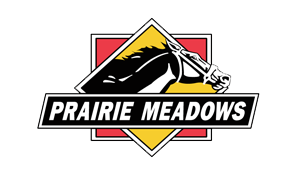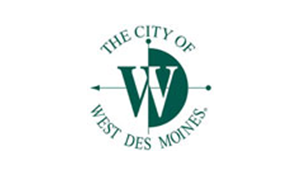Friday, June 6, 2025
1:00 PM
Valley High School
3650 Woodland Ave.
West Des Moines, IA 50266
Iowa Senior Games
888-777-8881 x3
info@iowaseniorgames.org
Are you looking for a team? CLICK HERE to check out our partner/team search document
Divisions: 50+, 55+, 60+, 65+, 70+, 75+, 80+
Entry Regulations:
1. Teams must be of all one gender.
2. Team rosters shall be limited to ten persons, including non-playing coaches, non-playing captains and non-playing bench personnel. Roster changes will be allowed only as permitted under National Rule F.
3. All registration and team rules apply to non-playing coaches, captains and bench personnel.
4. Athletes may compete with only one team.
5. Age divisions will be determined by the age of the youngest team member.
Format:
1. Teams will play a single-elimination tournament within their age group.
2. ISG reserves the right to change the tournament format for any age division based on entry numbers, space restrictions, or other circumstance.
*When Available* – CLICK HERE for the 2025 3 on 3 basketball schedule
CLICK TO VIEW THE ENTRANT LIST
This tournament will be conducted in accordance with National Collegiate Athletic Association (NCAA) rules, except as modified herein. For a copy of these rules, please visit the website www.NCAA.org.
National Collegiate Athletic Association
700 W. Washington Street
P. O. Box 6222
Indianapolis, IN 46206-6222
(317) 917-6222
www.ncaa.org
1. Teams must have a minimum of three players on the floor to start a game. Teams may continue/finish with a minimum of two players on the floor.
2. The game shall be played on half court by two teams of three players each, with a maximum of seven substitutes.
3. The winner of the coin toss shall take first possession of the ball. Possession at the start of the second half shall be determined by the possession arrow. Ball possession changes hands after each basket unless a technical or personal foul is awarded.
4. Officials do not put the ball in play, except at the start of each half. The referee will handle the rebound of the first free throw (first and second free throws if three shots are being taken) and then will not handle the ball after the last free throw.
5. Scoring and Timing Regulations:
a) Playing time shall be two halves of 15 minutes for all age groups. There shall be a continuously running clock with an intermission of five minutes for half-time. In the last two minutes of each half, the clock will stop in accordance with normal basketball rules. The clock also stops after a made basket during the last minute of the second half.
b) A tie score at the end of regulation time will result in a three-minute overtime period. During the first overtime period, the clock will stop in accordance with normal basketball rules, and after a made basket during the last minute. If the game is still tied at the end of the first overtime period, a final overtime will be played with a sudden-death format; the first team to score will win. Ball possession will be determined by a coin flip for each overtime period. There will be a one-minute intermission before each overtime period. All individual and team fouls carryover into overtime.
c) Two time-outs are permitted per team, per half. Timeouts do not carryover from one period to the next. If a game proceeds to overtime, each team shall receive no more than one additional time-out, regardless of the number of overtimes. Time-outs shall be 60 seconds in duration. The clock will not run during time-outs.
d) Three point shots are allowed. The three-point line distance for both men and women will be 19 feet, 9 inches.
e) A five-second closely guarded violation may be called against an offensive player holding the ball when that player does not pass, shoot, or dribble within that time. To be considered “closely guarded”, a defender must be in a defensive position and located within six feet of the player.
6. Throw-In Area and Ball In & Out of Play:
a) The game shall be played using the three-point line as the “check line.” The ball shall be returned to a point behind the check line after each change of possession as follows:
b) After a made basket and all dead ball situations, the ball shall be placed in play from the top of the key (‘throw-in area”). The ball must be advanced into play by means of a pass to a teammate. Violation of the throw-in area by the offense results in loss of possession.
c) After a turnover or defensive rebound, the ball may be returned to any point behind the check line. The player returning the ball behind the check line shall be in possession of the ball with both feet behind the line. The ball does not have to pass behind the 3-point line; only the player’s feet.
d) The penalty for attempting a shot before returning the ball successfully behind the check line shall be loss of possession.
e) The player who returns the ball behind the three-point line may maintain possession and attempt to score.
7. Player Restrictions When Inbounding Ball:
a) Following a made basket or dead ball, the ball shall be put in play within five seconds from the time the ball is in the “throw-in area”, regardless of whether or not the inbounder has taken possession of the ball. If the ball is not put in play within five seconds it shall be a violation, and possession shall be awarded to the defense with no change in the possession arrow.
b) The inbounder must stay within the designated “throw-in area,” which shall be the space at the top of the key with a width no less than the free throw lane extension area (12 feet wide) and a depth no less than 5 feet from the top of the three-point line.
c) The defense may defend anywhere on the court, however, no player (offensive or defensive) may enter the ‘throw-in area”, which is considered out-of-bounds.
d) The inbounder may not hand-off the ball to a teammate.
e) The inbounder’s teammates may not enter the three-second lane to receive a pass or set a screen until the inbounding teammate actually takes possession of the ball at the throw-in area; they may cross and exit the lane to reposition themselves prior to the inbound pass.
f) The 3 second lane count and the 5 second throw-in count shall not begin until the defensive team (now the new offensive team) takes the ball behind the three-point arc.
g) Violations of the throw-in area by the offense result in loss of possession.
h) Violations of the throw-in area by the defense result in a warning followed by a technical foul and loss of possession.
8.Substitutions:
a) Substitutions may be made after a basket, foul shot, stoppage of play, and any time an official beckons the player onto the court.
b) Players MUST be beckoned onto the court by the referee. Entering the court without being beckoned will result in a warning from the official; all subsequent violations will result in a technical foul and loss of possession.
c) Both the offensive and defensive team may substitute after the first free throw of a two shot foul, and after the second free throw of a three shot foul.
d) The defensive team can only substitute after a made basket or free throw, (when it is the final free throw taken) and ONLY if the offense is substituting at that time. Violating this rule will result in a warning from the official; all subsequent violations will result in a technical foul loss of possession.
e) On all stoppage of play (i.e., violations such as traveling, double dribble, three seconds, or out of bounds, etc.) either team can substitute as long as they request to sub prior to the inbounder having the ball in the throw-in area.
9. Fouls and Penalties:
a) A player is disqualified on his/her fifth foul. Technical fouls will be assessed in accordance with NCAA rules.
b) Team fouls carry over into the second half and overtime periods.
c) Any shooting foul with a missed basket shall result in two free throws (three for a three-point attempt), and the offended team shall retain possession.
d) Any shooting foul with a converted basket shall result in the basket being awarded along with one free throw, and the offended team will retain possession.
e) Any player control foul shall result in disallowing a converted basket, recording the foul and a change in possession.
f) Prior to the seventh team foul, any common foul shall result in loss of possession for the offending team.
g) All personal and technical fouls shall be counted against a team total (except for unsporting technical
infractions-see below). On the seventh team foul, a bonus shall be awarded for the remainder of the game.
10. Bonus Situations:
a) Beginning with the seventh team foul, any common foul shall result in a single free throw plus a bonus free throw if the first free throw is made, and the offended team shall retain possession.
b) Beginning with the 10th team foul, any common foul shall result in two free throws, and the offended team shall retain possession. If a shooting foul occurs during the running time part of the game:
a) All players will remain behind the arc and the offense will re-gain possession of the ball, even if the clock goes to the two-minute mark. At that time, the clock will stop until the ball is put in play again from the throw in area.
b) All the players behind the arc may cross the arc once the shooter releases the ball. The shooter may cross the free throw line after the ball strikes the rim, flange or backboard or retrieve the ball upon completion of the last free throw. During the stopped time portion of the game:
a) During the last two minutes of each half, and during any overtime period, the automatic awarding of team possession after free throws does not apply (live rebounding will be in effect)
b) During live rebounding all players on both teams are allowed to line up along the free throw lane when the free throws are shot.
c) The free-throw shooter shall not break the vertical plane of the free-throw line with either foot until the ball strikes the rim, flange or backboard or until the free throw ends.
d) No player shall enter or leave a marked lane space or contact any part of the court outside the marked lane space until the free-throw shooter has released the ball.
e) If the shooter makes the last awarded free throw, the opposing team will inbound the ball.
11. Unsporting and AdministrativeTechnical Infractions:
a) An unsporting technical infraction shall be when a player, substitute, coach or any bench personnel commit or display any unsportsmanlike behavior as set forth and defined by NCAA guidelines. Penalty for unsporting technical infractions shall be two free throws attempted by any player from the offended team and possession of the ball. Additionally, this technical counts towards the team foul total. Any player receiving two unsporting technical shall be removed from the game. Any unsporting technical called on bench personnel are assessed to the coach as well. Combination of two direct or indirect unsporting technical to the coach will require their removal from the game. Examples of unsporting behavior includetaunting and baiting, use of profanity, continuous questioning of official’s judgement, defense breaking the
plane of the throw-in area, making contact with the ball or the thrower, just to name a few.
b) Administrative technical infractions are issued for the following with a penalty of two free throws by any player from the offended team and possession of the ball but does not count towards team foul total or disqualification or ejection:
1. Delay of Game: A warning will be given the first time any of the following occur:
Improper substitutions, defense breaking the plane of throw-in area with no contact of ball or thrower, delaying return to floor after timeouts or intermission, interfering with the ball and not allowing it to be readily available and huddling on the court or prior to free throws. Stalling or not running an offense is a delay of game, except during the last 2 minutes of 2nd half or any overtime. Administrative technical will be issued when any events occur following the warning.
2. Other administrative technical infractions include wrong number in the score book, player not listed or needing to be added after the game starts.
12. Uniforms:
a) Team clothing must be of like design and color.
b) Teams must have both “home” and “away” uniforms with permanently attached numbers. The numbers
must be 4” on the front and 6” on the back in the center of the jersey.
c) Sponsors may be added to uniforms, but cannot interfere with number placement.
d) Uniforms shall be free of inappropriate symbols or wording.







